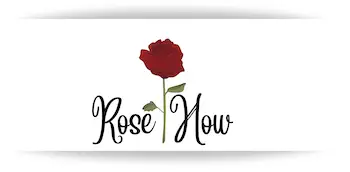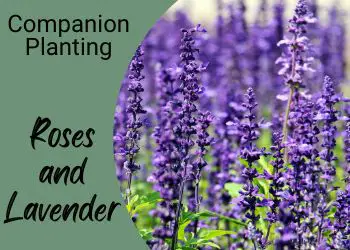Thinking about planting roses and lavender? Or adding lavender as a companion plant near your roses? Well here’s the information on everything regarding roses and lavender.
Let’s start with a quick summary, then we’ll get into more details…
Roses and lavender can be great companion plants. Both of these plants produce flowers at the same time and both like well-drained soil of a similar type and pH value. Lavender is low maintenance, and shorter so won’t overshadow your roses. It also suppresses weeds and attracts pollinators.
That’s the summary, now let’s get into more details as there are one or two things to watch out for.
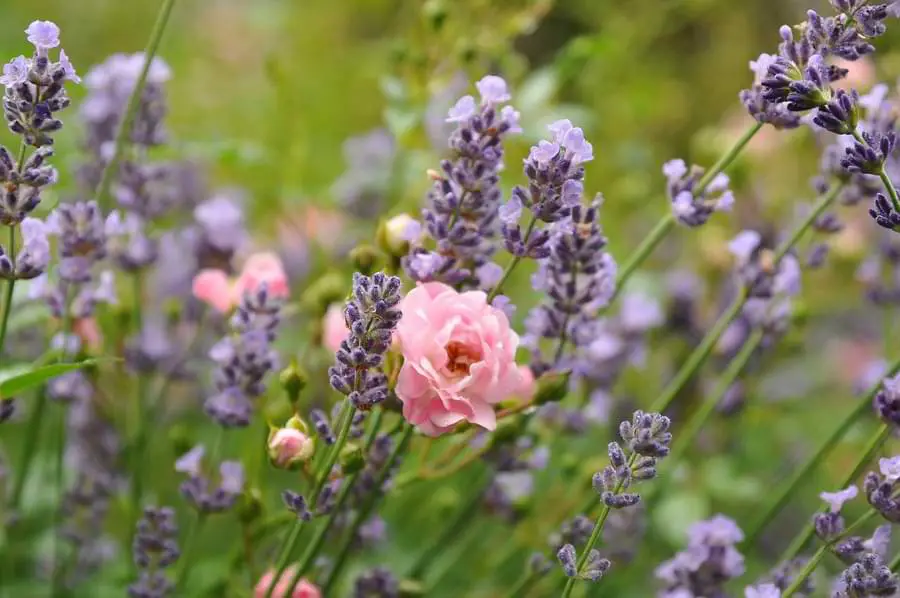
Zones
Similar to roses, lavender has variable hardiness zones. They range from USDA zone 5 to 11. Thus, a lot of their species can be paired with zone 5 to 9 roses.
For example, the English lavender (Lavandula angustifolia) also called the true or common lavender range from hardiness zone 5 to 10 and grows in all seasons.
On the other hand, French lavender, also called Spanish or butterfly lavender, grows well in zones 8, 9, 10, and 11.
Some subtypes of English and French lavenders, like Lavandula Latifola, are found in USDA zones 6 to 9.
Another very famous lavender called Egyptian lavender is commonly planted in zones 8 and 10.
| Lavender Type | Hardiness Zone |
|---|---|
| English Lavender | 5 – 10 |
| French Lavender | 8 – 11 |
| Portuguese lavender | 6 – 9 |
| Egyptian Lavender | 8 – 10 |
So all of these varieties can be easily paired with roses to enhance your rose bed.
Color options
People mostly consider lavender as being only purple. But they do have other options as well.
You can just as easily find and plant whites, pinks, blues, and violet color options in your garden along with multiple rose tints.
Some lavender species other than purples that can be contrasted well with multiple rose colors are listed below.
White lavenders — Nana Alba lavender, Ballerina lavender, Celestial star lavender, Van Gogh lavender, etc.
Blue lavenders — Hidcote blue, Betty’s blue, Thumbelina Leigh lavender, etc.
Pink lavenders — Rosea lavender, Miss Katherine lavender, Little Lottie lavender, etc.
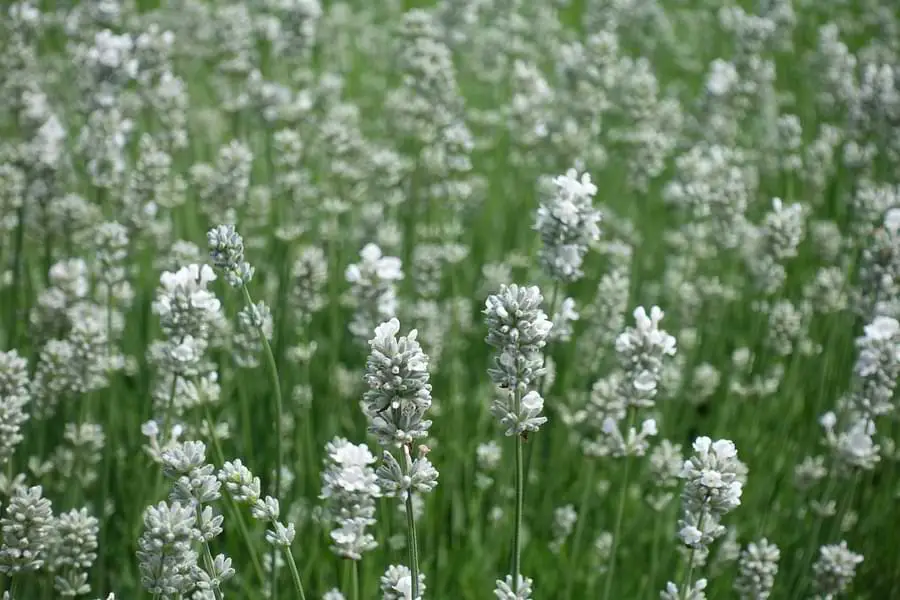
White Lavender
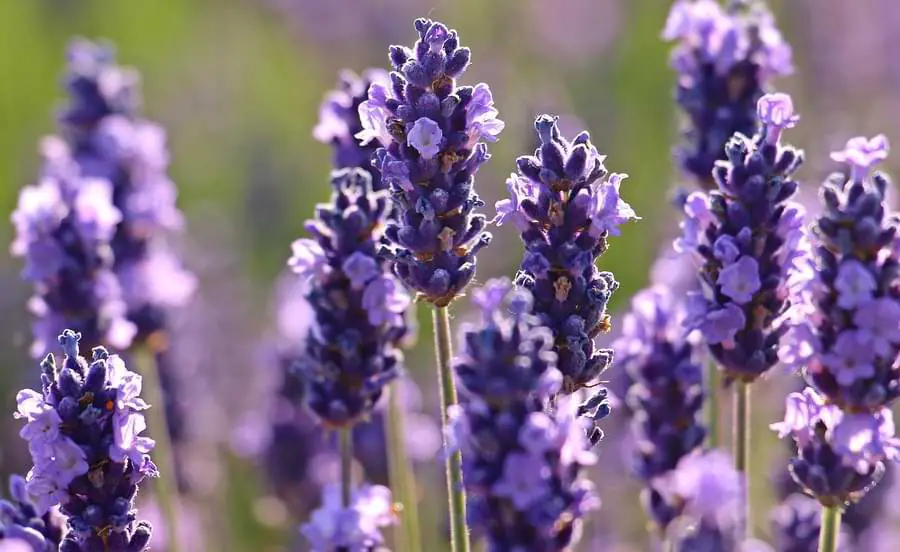
Blue Lavender
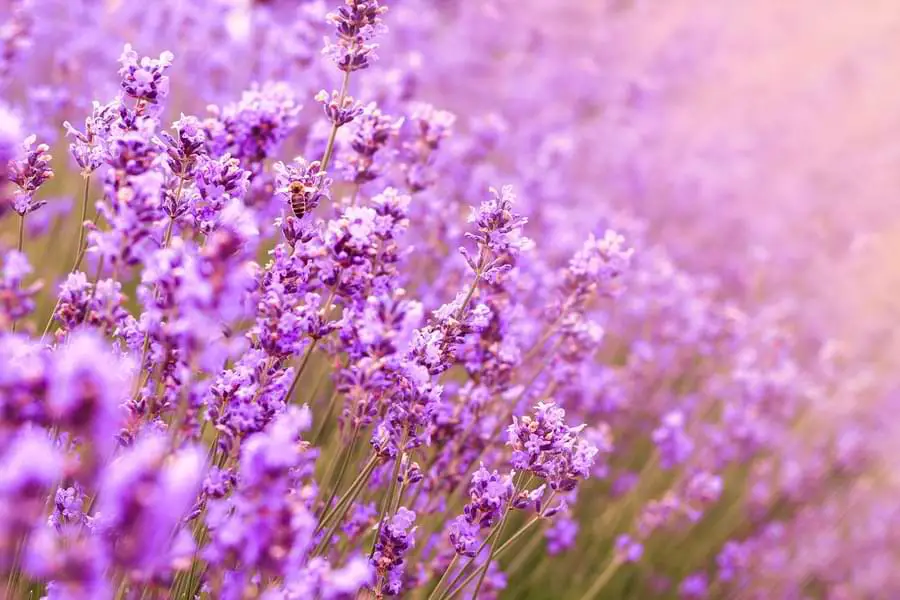
Pink Lavender
Weed suppression
Lavender is excellent for ground cover. So it will spread around the flower bed and offer a nice carpet for your roses to bloom over.
This also means lavender is great at suppressing weeds, so that’s the weeds taken care of!
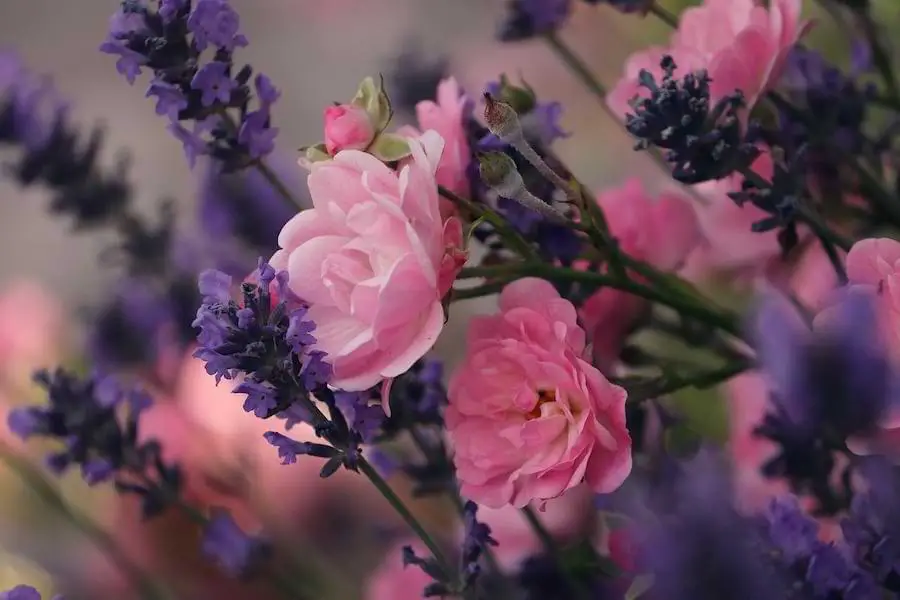
Pests and pollinators
Lavender has a strong scent, and it helps to ward off aphids and some other pests. However, they are not completely free of pests.
They do have their own pests …but are not considered a threat to roses, and can be treated with simple repellents. These are:-
Major lavender pests
- Garden flea hopper
- Septoria leaf spot
- Four-lined plant bug
Minor lavender pests
- Tarnished plant bug
- Leafhoppers
- Spittlebug
- Woolly bear caterpillars
Putting that to one side, lavenders do encourage pollination by attracting honey bees and butterflies. Something that roses do struggle to do.
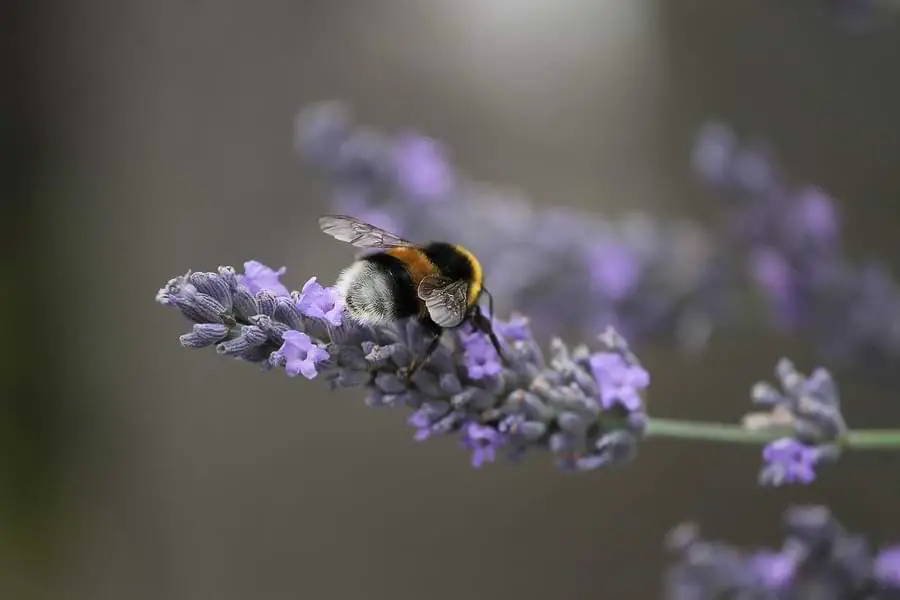
Soil and sun
Roses and lavender pairs have a lot of similarities in soil and sun requirements.
Both of the plants require full sun and well-drained soil. However, lavenders prefer soil that is less dry compared to roses.
So it’s safer just not to water the lavender every time you water your roses. This is why you should ideally plant your lavender a few feet from your roses.
The soil texture preference for both of the plants is also the same. Just like roses, lavender also likes mixed soil, so some chalk, clay, but mostly loamy soil for better blooms.
You can read more about the best loam soil for roses here.
The pH factor is also very important. The ideal soil pH for roses is 6.5 to 7.0 however for lavender it is 6.0 to 8.0.
Comparative height and space
Lavender usually grows 2 – 2.5 feet (60 to 75 cm) in length under normal conditions.
This is an ideal height to cover those spindly lower branches on your rose bushes. And so they will not interfere with the ornamental exquisite of the rose shrubs.
Moreover, its aromatic presence adds to the beauty of the rose bloom.
Contrary to the height, lavenders ideally like around 2-3 feet of space for proper airflow between them but can be grown in and around the rose plant.
Although some water and soil requirements of both plants differ, thus it’s good to have a safe distance of 2 to 3 feet between them.
This also allows you space to work in between each plant, making deadheading much easier.
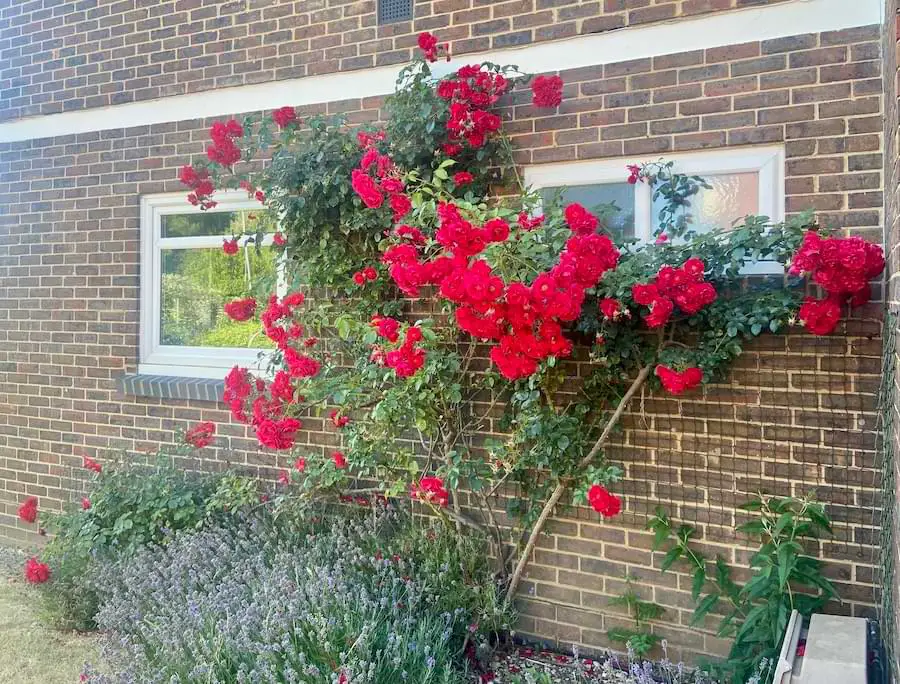
Roses and Lavender Pros and Cons.
Here’s a quick summary of the pros and cons of roses and lavender.
Pros
- Lavender attracts pollinators
- Compatible soil type and pH
- Likes direct sunlight
- Suppresses weeds
- A few color options
Cons
- May encourage its own pest types
- Lavender is rather commonplace
Roses and Lavender ~ More roses help 🌹
I hope this has answered any questions you might have had regarding roses and lavender being companion plants. Be sure to check out my list of rose companion plants. And also check my tools and resources page.

Hi, I’m Michael. My passion for roses was sparked a few years ago after visiting a dedicated community rose garden. So Rosehow.com represents my take, my learnings, and my help for anyone looking to grow, be proud of, and harvest roses.
